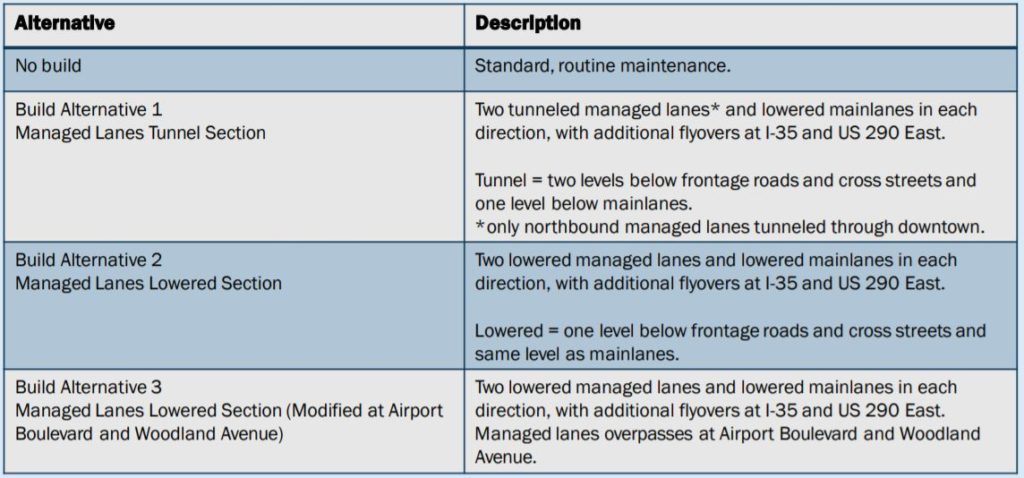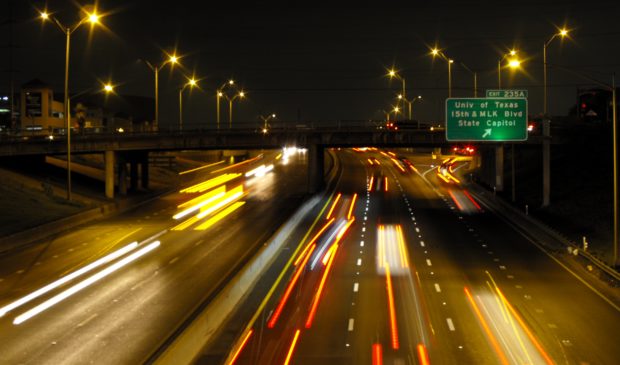Urban Transportation Commission creates working group to form I-35 recommendations
Wednesday, December 16, 2020 by
Sean Saldaña A Texas A&M Transportation Institute report recently ranked the segment of Interstate 35 that goes through Austin the most congested roadway in the state.
This congestion is one of the reasons behind the I-35 Capital Express Project, a multiyear, multibillion-dollar transportation initiative that will add two non-tolled managed lanes in each direction along I-35 from U.S. Highway 290 East to State Highway 71/Ben White Boulevard. The project will also add flyovers at I-35 and U.S. 290.
Discussions about the plan were central to last week’s Urban Transportation Commission meeting, which kicked off with a presentation by Austin Transportation Director Robert Spillar recapping the Capital Express Project’s background, timeline and progress thus far.
At the moment, the project is in its scoping phase, with the city and state identifying problems, reviewing proposed alternatives and analyzing possible alternatives.
Referring to the opportunities for community involvement, Spillar said, “What I want to point out is that what (the Texas Department of Transportation) is scoping right now is the statement of purpose and need, and the range of alternatives that they’re looking at. This is the start of the (environmental review) process. And so there’ll be additional scoping opportunities, early next year, and more opportunities for the public to be involved throughout this process.”
Right now, TxDOT has identified three preliminary build alternatives summarized in this chart.

All build alternatives would include improving bicycle and pedestrian accommodations, reworking the Lady Bird Lake bridge and removing the upper deck in each direction from Airport Boulevard.
During his presentation, Spillar highlighted a number of local concerns for TxDOT recommendations. One of these is traffic flow during the construction process.
“One of the focuses that we have in the Austin Transportation Department is working with all the regional partners to make sure the timing of the different construction allows us to still move around when things are under construction,” he said.
Another major concern is how the project could impact Austin’s historically marginalized communities.
Spillar referenced the role I-35 had in Austin’s redlining, noting that “projects are products of the times they’re launched, and we are in a time where I think our community and the nation has a heightened awareness that we need to contextualize the impact that these facilities have made in the past on our community.”
When asked about non-freeway alternatives to the project that would turn I-35 into a street or boulevard, Spillar was unambiguous in stating that the city would not be recommending such a plan.
“Doing away with (I-35) … doesn’t solve the issue, I believe. And I think that’s proven up by 85 percent of the traffic being local to the region,” he said.
There was also discussion about whether or not to implement tolls to mitigate traffic and generate revenue.
In response, Spillar said, “Professionally, I believe that the choice to not use tolls – and specifically variable tolls/user fees as a mechanism to manage (highway traffic) – drives a different footprint for the facility and therefore changes the impact profile of this alternative.”
Later in the meeting, the commission reviewed an initial draft of recommendations for TxDOT put together by Commissioner Susan Somers. The draft totals five pages and includes a number of ambitious goal recommendations, including the addition of two non-tolled lanes on I-35 through Central Austin, cutting traffic fatalities by half by 2035 and to zero by 2050, and for 50 percent of Austinites to commute by foot, bike and public transit by 2039.
Somers made clear that discussions with citizens and other advocacy groups influenced many of the recommendations and language in the draft.
“I was looped in on a group of citizens and folks from our sister commissions in the Bicycle Advisory Council and the Pedestrian Advisory Council … and I thought what they had was so good … it was like, let’s just do that but add a couple things,” she said.
While the commissioners were interested in the recommendations, they were hesitant to adopt them immediately because some board members felt they hadn’t had enough time to review them.
Instead, the commission moved to create a working group with Somers, Chair Mario Champion, and commissioners Allison Runas and Daniel Alvarado.
According to Champion, the working group’s goal is to create “a more finely honed set of recommendations” to be discussed and approved in a special called meeting that will take place “hopefully before Christmas.”
Photo made available through a Creative Commons license.
The Austin Monitor’s work is made possible by donations from the community. Though our reporting covers donors from time to time, we are careful to keep business and editorial efforts separate while maintaining transparency. A complete list of donors is available here, and our code of ethics is explained here.
You're a community leader
And we’re honored you look to us for serious, in-depth news. You know a strong community needs local and dedicated watchdog reporting. We’re here for you and that won’t change. Now will you take the powerful next step and support our nonprofit news organization?




